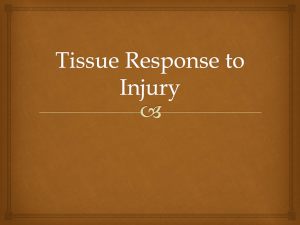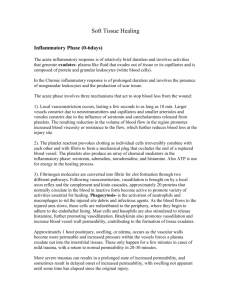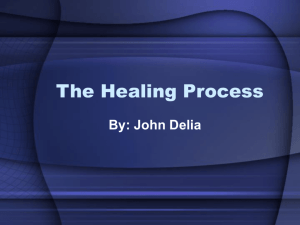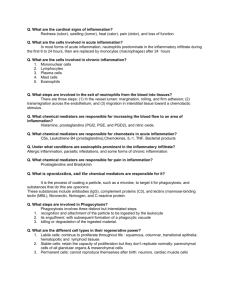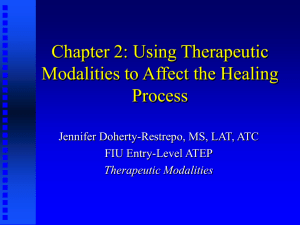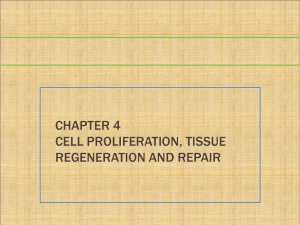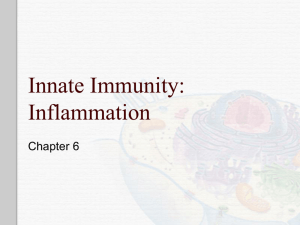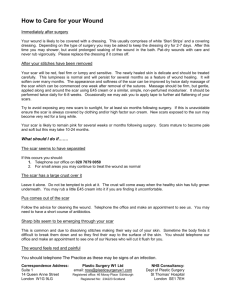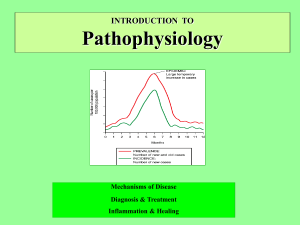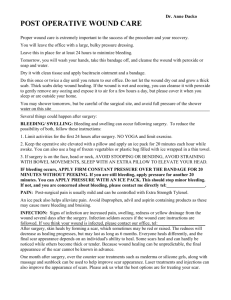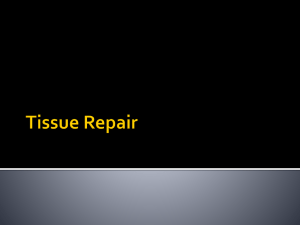Tissue Repair and Electrotherapeutic Agents Lecture Notes
advertisement
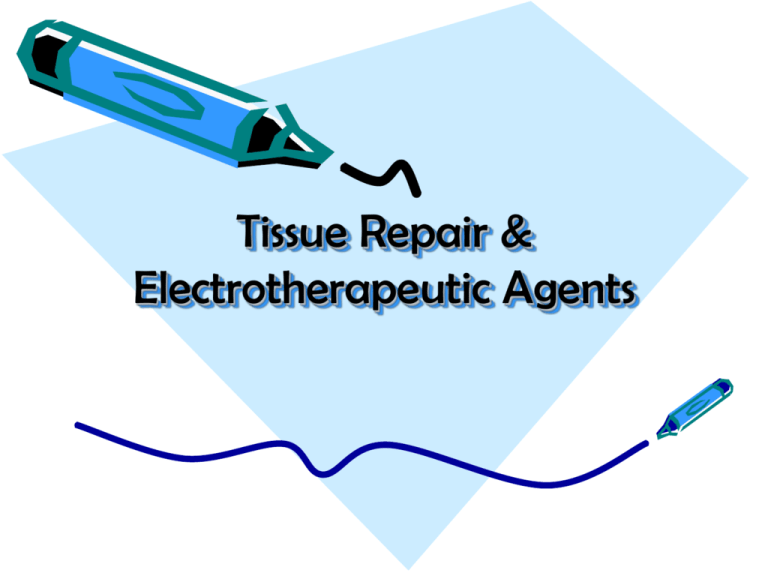
Tissue Repair & Electrotherapeutic Agents Causes of Inflammation 1. 2. 3. 4. 5. 6. 7. 8. Soft tissue trauma Fractures Autoimmune diseases Microbial agents Chemical agents Thermal agents Irradiation Foreign bodies Inflammation & Repair consists of 4 phases: 1. 2. Initial injury phase (bleeding, clot,…) Inflammatory response phase (prepares wound for healing) 3. Fibroblastic repair phase, proliferation (rebuilds damaged structures & strengthen the wound) 4. Maturation phase, remodeling (modifies the scar tissue into its nature form) Initial Injury Phase Destruction of tissue (injury of cells) bleeding Inflammatory Phase Signs of inflammation Fibroblastic – Repair (proliferative) Phase First few hours after injury 4 to 6 weeks Reconstruct (fibroblasts- endothelial cells – macrophages) Resurfacing Strength of wound Processes Occur in The Proliferative Phase Epithelization Collagen production fibroblasts Wound contracture myofibroblasts. Contract pulling the ends of wound (scar) Neovascularization Maturation (Remodeling) Phase Takes months or years Change in size, form & strength of scar tissue Fibroblasts, macrophages, myofibroblasts, capillaries and water content of tissue The goal is restoration of prior function of injured tissue Factors Affecting Rate of Maturation & Scar Characteristics are: Fiber orientation Balance of collagen synthesis and lysis Factors That Impede Healing Extent of injury Edema Hemorrhage Bad vascular supply Separation of tissue Muscle spasm Atrophy Factors That Impede Healing Corticosteroids Keloids & hypertrophic scar Infection Humidity climate & oxygen tension Health, age & nutrition Injury Management Cryotherapy RICE (rest, ice, compression & elevation) The Role of Progressive Controlled Mobility in The Maturation Phase Wolff’s Law: states that both bone & soft tissue will respond to the physical demands placed on them, causing them to remodel along the line of tensile force. Immobilization Control mobilization, revascularization, muscle regeneration & reorientation of muscle fibers Active strengthening exercises in the remodeling phase Modality not combined with antiinflammatory medication during initial acute & inflammatory phases Applied Electrical Charges The effect on the body depend on: Intensity Nature of resulting current Chemical changes (direct current) Stimulation of excitable tissues ( stimulating current) High currents significant heating (diathermy) Therapeutic modalities can restore normal cell membrane potential and leads to decreasing inflammation, decreasing edema and increasing healing. Good Luck
